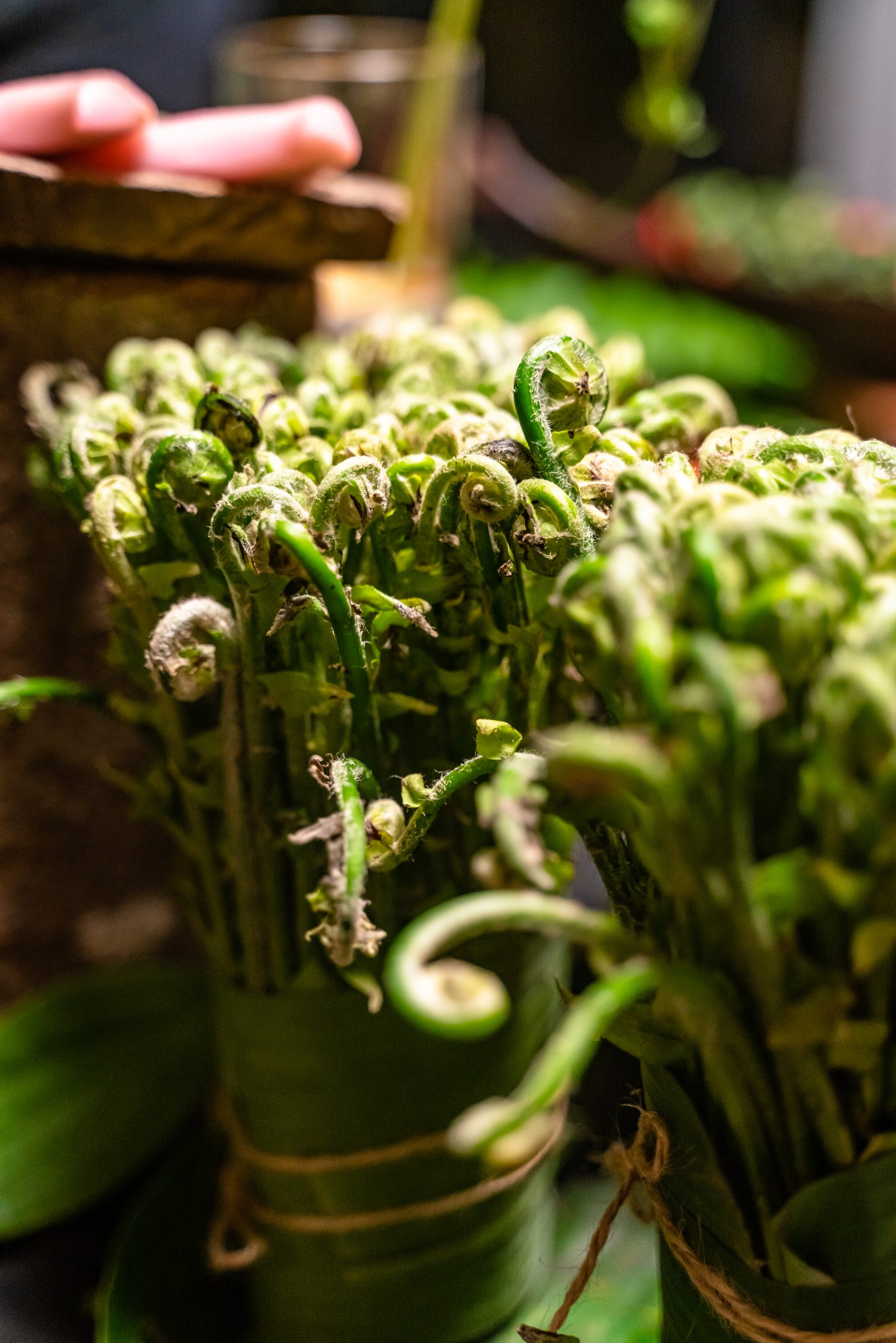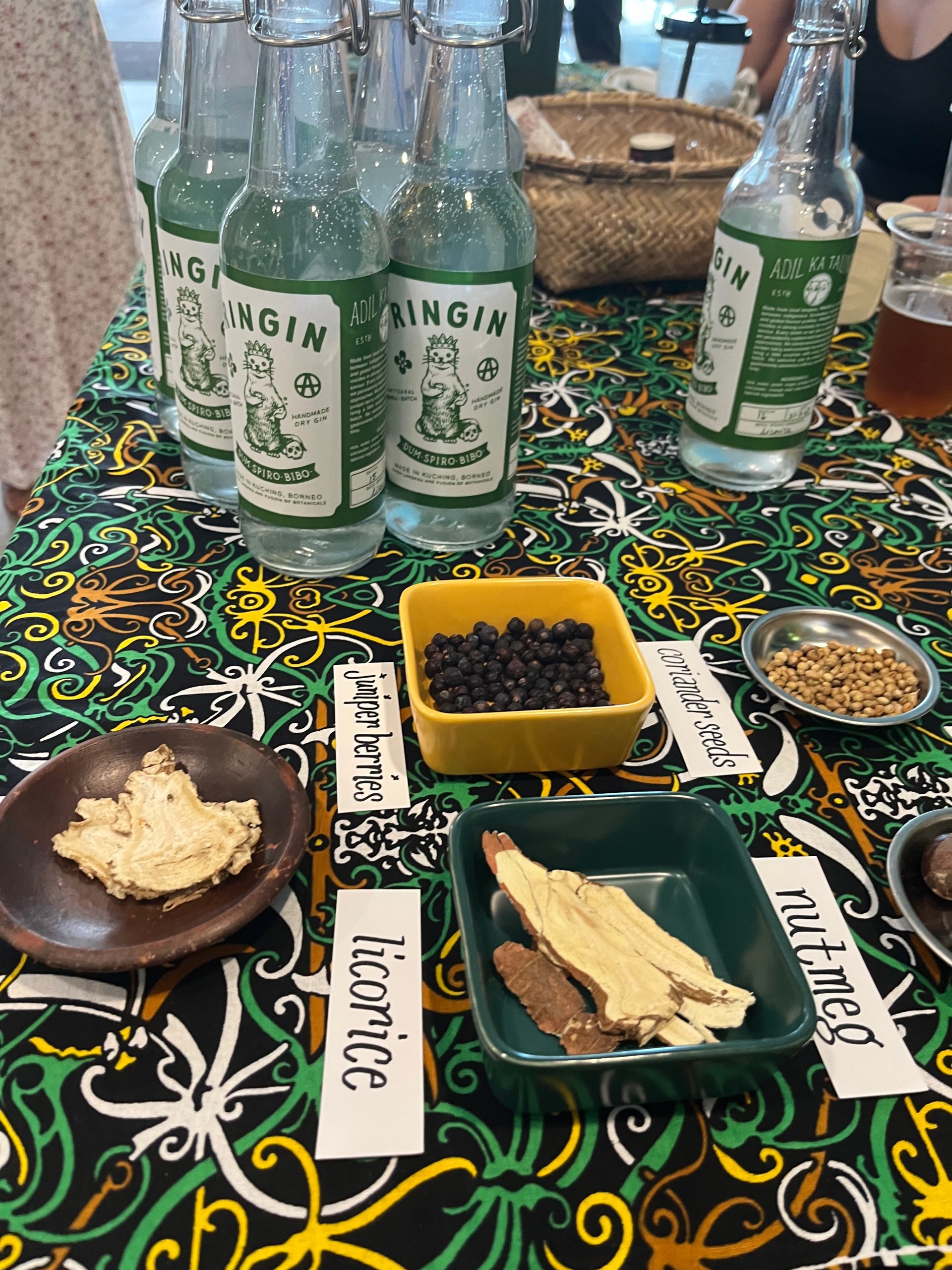
Tempting visitors away from the smorgasbord of Malaysia’s vast capital or the street food of Penang, the country’s world heritage icon, is no small task. But Kuching, as the first ‘Creative City of Gastronomy’ in Malaysia, is ready to stand toe to toe with these culinary giants. It offers its own unique food culture and even its own blend of Laksa, described by the late, great Anthony Bourdain as the ‘breakfast of the Gods’. But one dish does not a designation make. So what can the intrepid eater expect from the cuisine of this Borneo capital?
Every conversation about Borneo begins with its biodiversity. One of the oldest and most mega-diverse places on the planet, the indigenous people have been hunting and gathering from its every mountain, valley, river and coastline for hundreds of years. With over 40 ethnic groups, each embedded in their own environment, visitors will encounter a range of strange and wonderful ingredients drawn from their bountiful harvest.
Sago and rice are the staples, yielding pulut, linut, lemang and a whole range of delicacies based on their processing. Even the plump grub that feasts on the palm is a popular snack. Sticky cakes, bamboo tubes, crisp baked pearls and crunchy chips accompany every meal. Sarawak rice is second to none, cultivated on steep mountainsides and in deep verdant valleys. It promises over 40 strains found only here, in almost every colour, including the premium padi cultivated in the Bario Highlands, a new favourite of chefs around Malaysia for its intense aroma and sticky texture. These are picked and processed by hand, in the traditional way, giving new meaning to eating green.
Sarawak produce is the result of hundreds of years of history and much of it is still sourced in the old style. Famed for its ferns, Midin (Stenochlaena Palustris) and Paku (Diplazium esculentum) are market favourites, foraged daily and then fried, blanched, steamed or steeped in garlic, belacan or khasturi lime juice as the dish demands. Add to that a whole range of other ingredients and you have a feast.

Eye-catching, yellow eggplants, sour to the tongue, are often served with fish and lend their shape to the state’s most famous tattoo. Dabai, shaped like an olive but creamy like an avocado, is popular as an addition to fried rice. Strange, fermented honeys from Sarawak’s stingless bees, packed with anti-oxidants and other health-giving properties, and smoky palm sugars tapped from the abundant Nipah groves that line Sarawak’s many waterways sweeten each dish and its pepper packs a punch!
All these become equally an expression of culture. As indigenous food researcher Raine Mel Riman puts it: “If Samin Nosrat’s pillars of successful cooking are Salt, Fat, Acid, and Heat, Time would be the fifth element, a vital component of Sarawak’s indigenous food system. Slow food has been the heart of Sarawak’s indigenous food and cuisine for generations.” The indigenous people have been smoking, salting, fermenting and curing for centuries. Preparation is both unrushed and immediate as the jungle yields even the pot in which to cook pansuh, Sarawak’s most famous indigenous dish of ingredients baked in bamboo.
Even the uncooked is unsurpassed. Enormous orchards provide both eating and hiking opportunities, evidence of the cultured rainforest tended and shaped by the indigenous people over many generations. Acres of durian, itself indigenous to this island, are one great draw and time has yielded many varieties. Experience the rainy season at the end of the year for markets piled high with the world’s most pungent fruit and a whole cornucopia besides, all the natural flavours and aromas of Southeast Asia combined.

Rice is a spiritual affair here, traditionally cultivated in Sarawak as part of the indigenous cosmology. But its greatest expression is in Tuak. This rice wine is the ultimate homebrew, fermented from glutinous rice and locally grown yeast (ragi), and each indigenous household once made its own. It was once central to ritual, an offering to the spirits and a conduit to the other realms. But now it is one of Kuching’s favourite tipples.
Boutique producers are popping up across Sarawak to add to the traditional home brewers and the range is ever increasing. Ginger, apple, roselle, pineapple and even mulberry have added flavour and colour to the original. Like other wines, each Tuak is a unique flavour profile, the product of a family recipe or modern experimentation.
The Tuak cocktail is also appearing on menus across the city, a distinctive Borneo flavour to pair with all kinds of cuisine from Mediterranean to modern Western. Chic new bars are developing blends and offering mixology courses in how to make the most of the spirit of Sarawak. But visitors to the longhouse will see Tuak culture in action with the sadong. Tiny shots of tuak handed out to each visitor at each door as the first greeting into a new community – one glass, one drink, one heart. All these accompanied by the traditional Iban toast, the long, drawn-out communal cry of Ooh-ha!

A quick stroll down Kuching’s central streets tells a story about its development. The Malay kampung, steeped in the smell of satay baking over charcoal braziers, gives way to India Street, lined with fabric traders and roti canai sellers, followed by the Brooke-era Courthouse, now a network of trendy restaurants, and then on to Carpenter street, named for the Chinese carpenters that first populated it and the inevitable food culture that accompanied them.
This is the heart of Sarawak’s street food, some of it shared across Malaysia and some specific to this state. Bubur Pedas, a Ramadan staple for breaking fast, is only found in Kalimantan’s Sambas and Sarawak, a rich vegetable porridge redolent with turmeric leaves and other aromatics. Teo Chew delicacies like Kueh Chap are still served across from the community’s first temple, just one of the recipes preserved in Sarawak’s immigrant culture but now lost back in China. Visitors can eat their way down the street and across Asia, from Kuching’s own Kolo mee to Japanese Yakitori.
This is the soul of Kuching’s coffeeshop culture and the source of the city’s extreme connectivity. Visitors can see multi-cultural communities sit down together at the same table, regardless of race, religion or background, or just stop by to greet friends having a bite. Nothing binds Kuching quite like food and the ‘kopitiam’ is the city’s greatest hangout.

Gastronomy is in Kuching’s DNA and it permeates every event. Kuching loves a party and always offers a full stomach. The iconic Rainforest World Music Festival returns every year with a food bazaar. Tourists can take a trip to the Siniawan night market where Hakka food from one of Sarawak’s oldest Chinese communities enlivens this heritage settlement. The Kuching Waterfront is regularly populated with stalls serving every imaginable foodstuff for a wide range of events from the Sarawak Regatta to the Citrawarna Festival. Carpenter Street hosts a multi-cultural mooncake festival to coincide with the mid-autumn celebrations where food, including a vast range of multi-flavoured mooncakes, makes a grand appearance.
Every year, the Kuching Festival comes back as the main event in the social life of the city. For the whole month of August, visitors can enjoy up to 300 food stalls in one giant celebration of eating with enough variety to dine out for a year. The Kuching food community shows endless imagination, offering up everything from coconut icecream and durian fritters to an adoring and committed crowd.
For, in Kuching, it is the crowd that is key. Laid-back, chilled out, fun-loving and friendly, they congregate around food and genuinely enjoy sharing. So whether you hail from the rest of Malaysia or from further afield, get on a plane, land in Sarawak and pull up a chair at a dining table. This City of Gastronomy is inviting you to a feast.